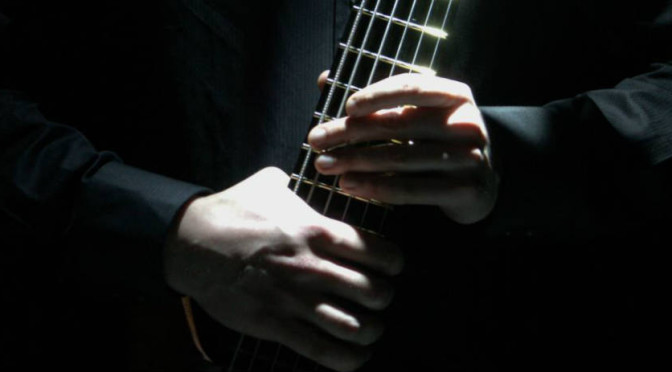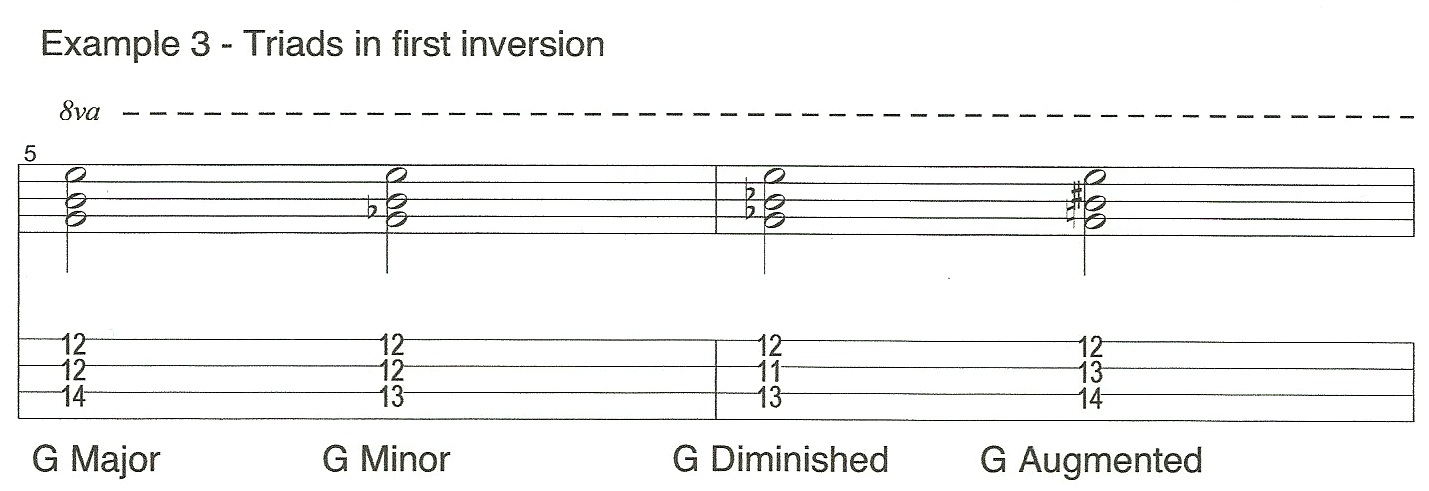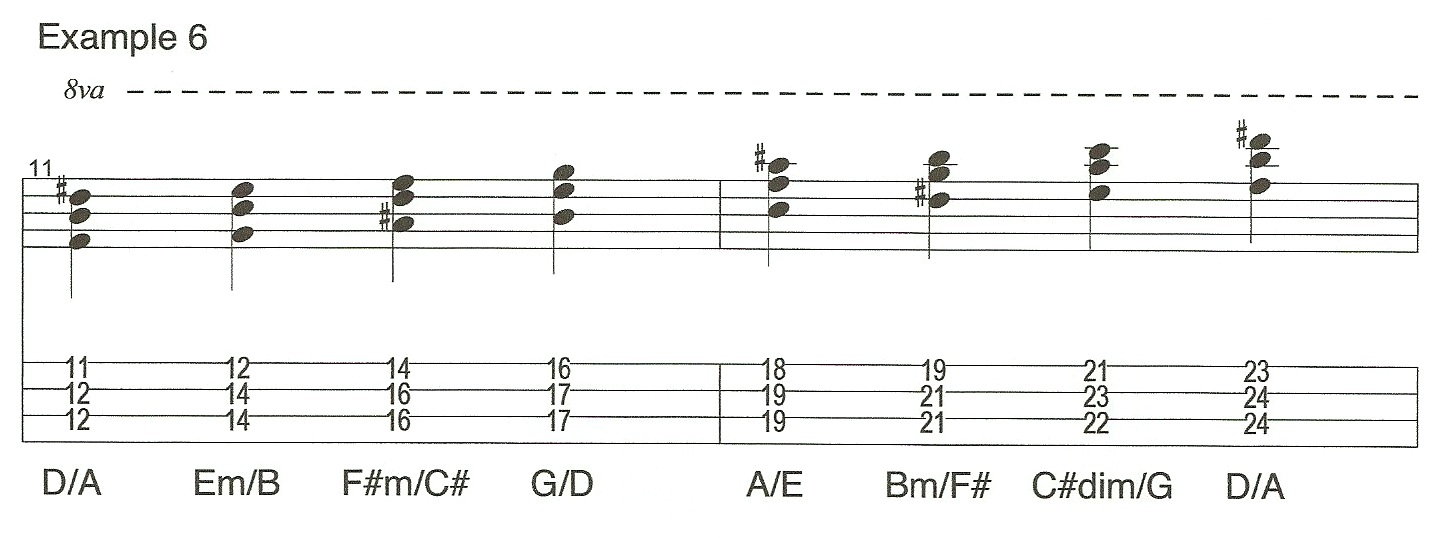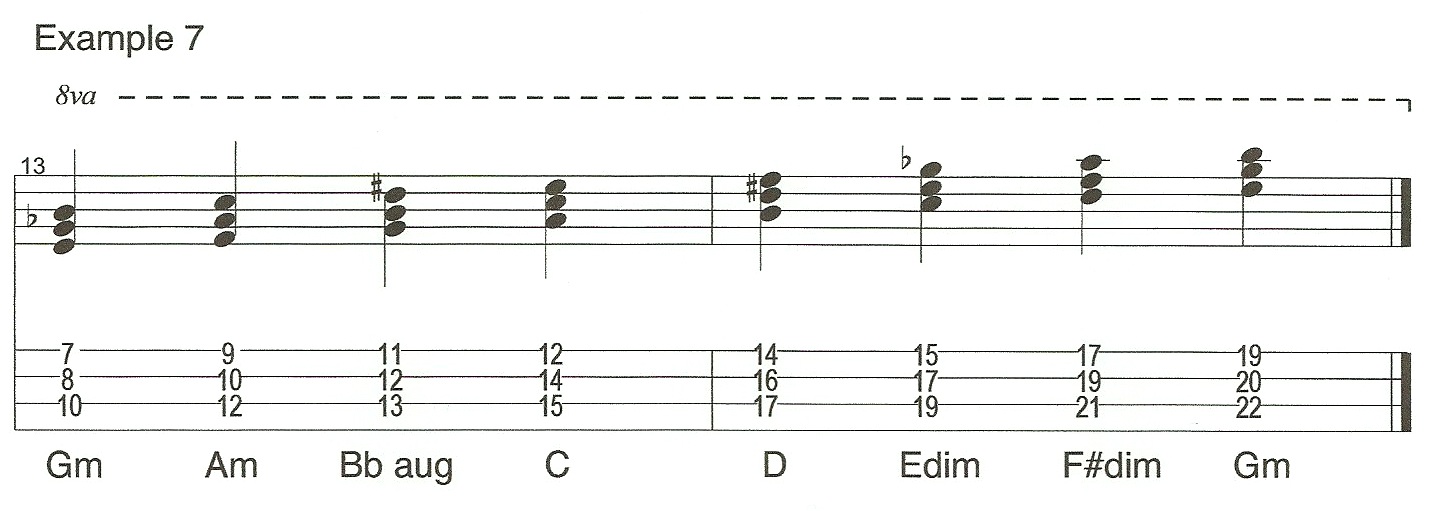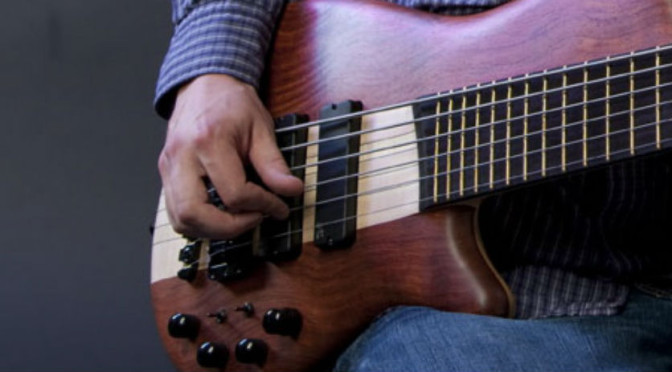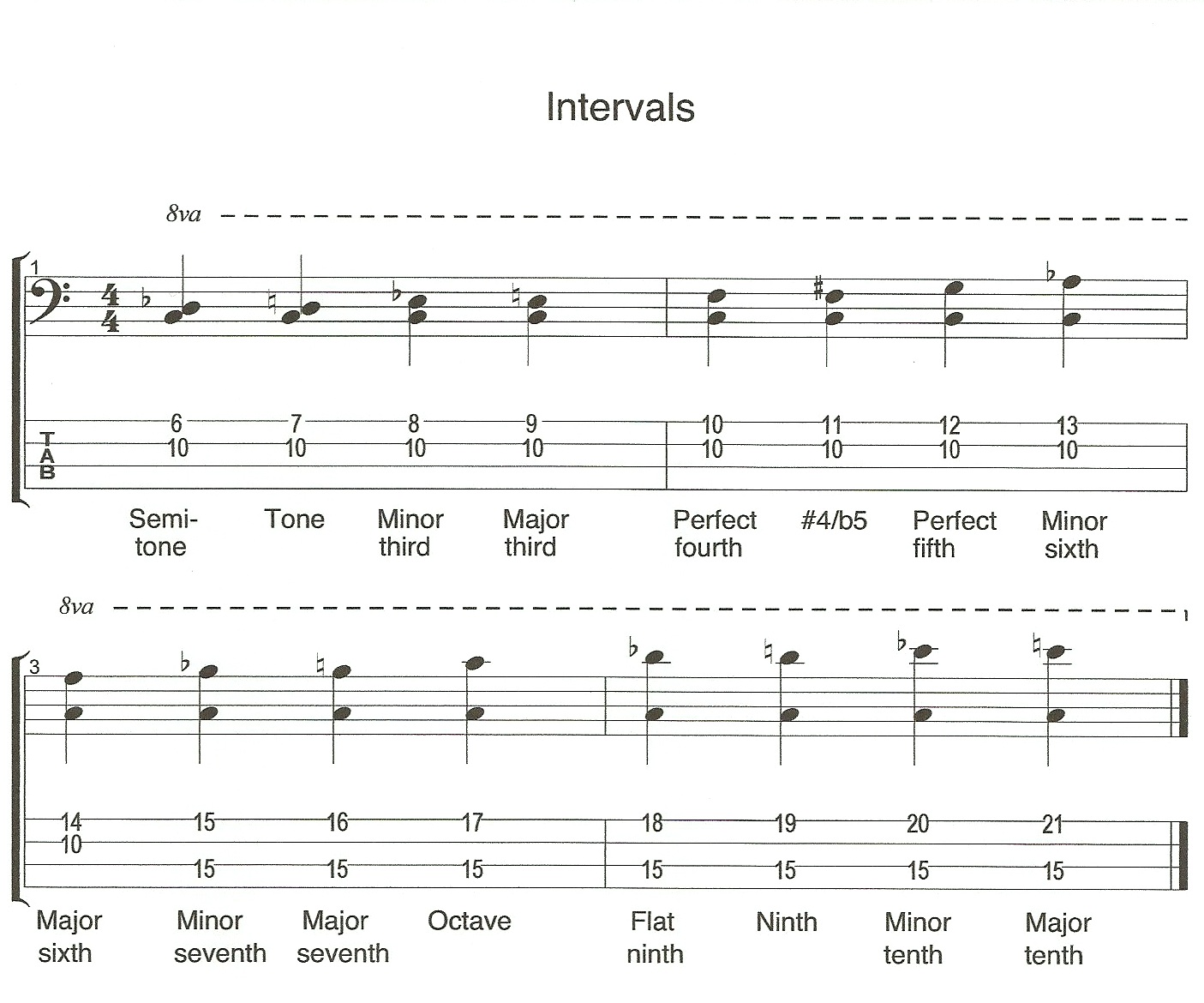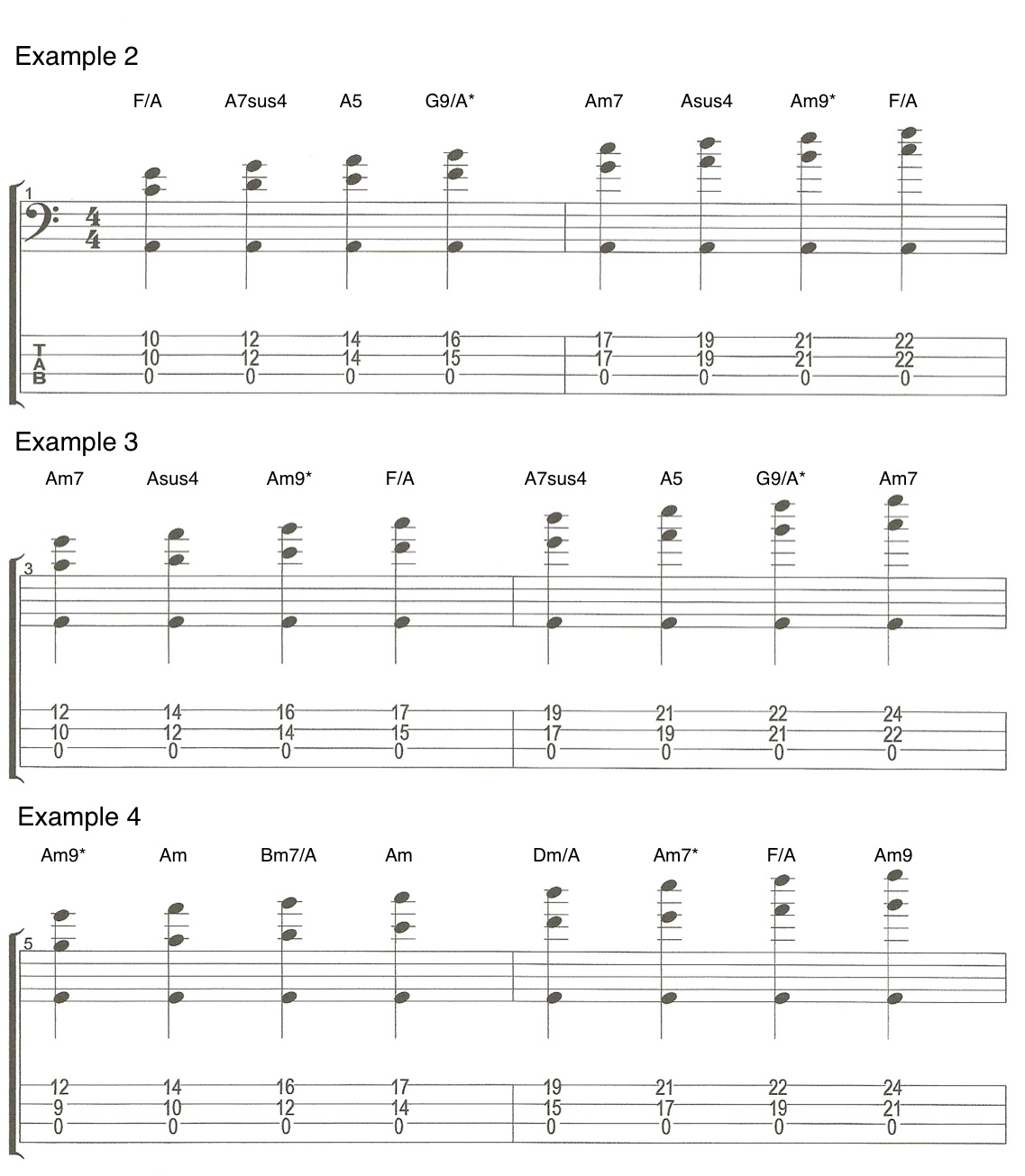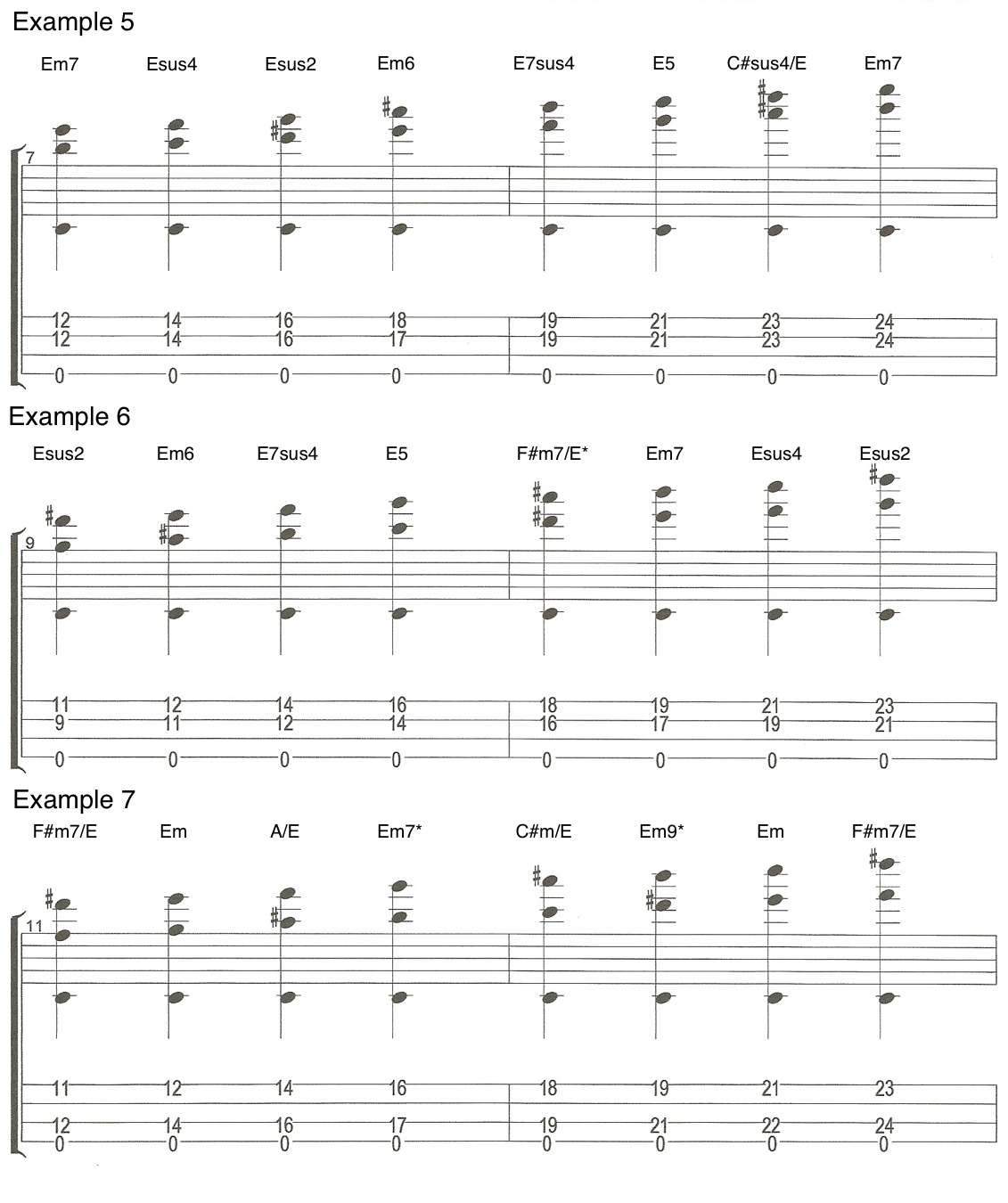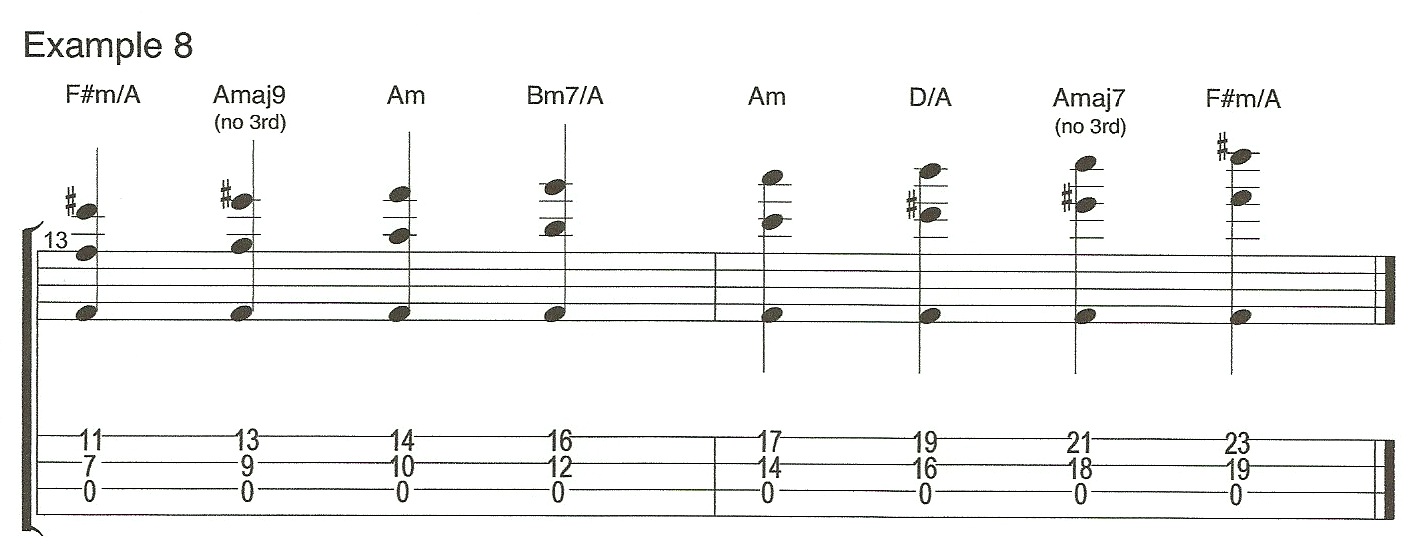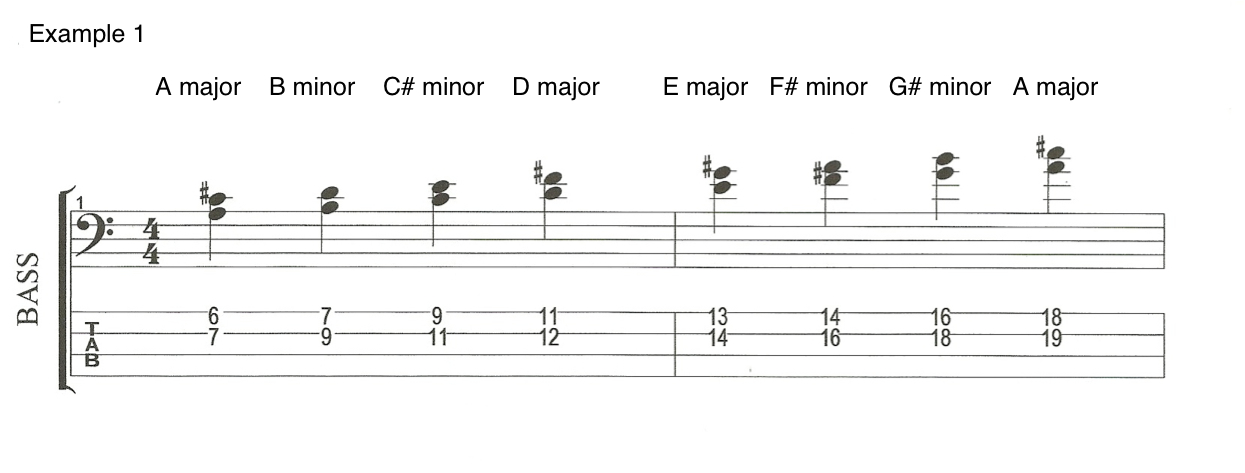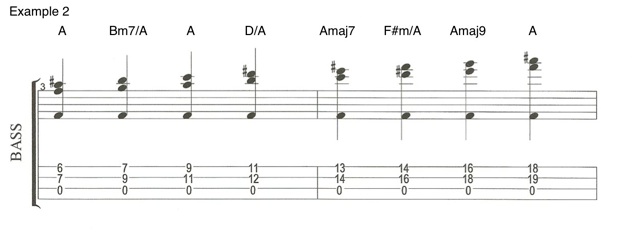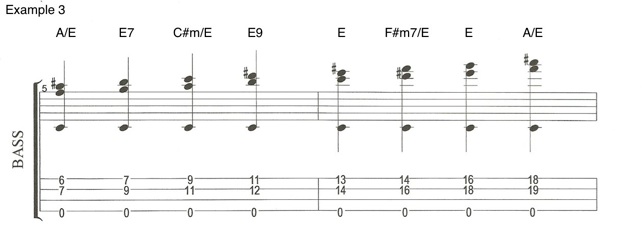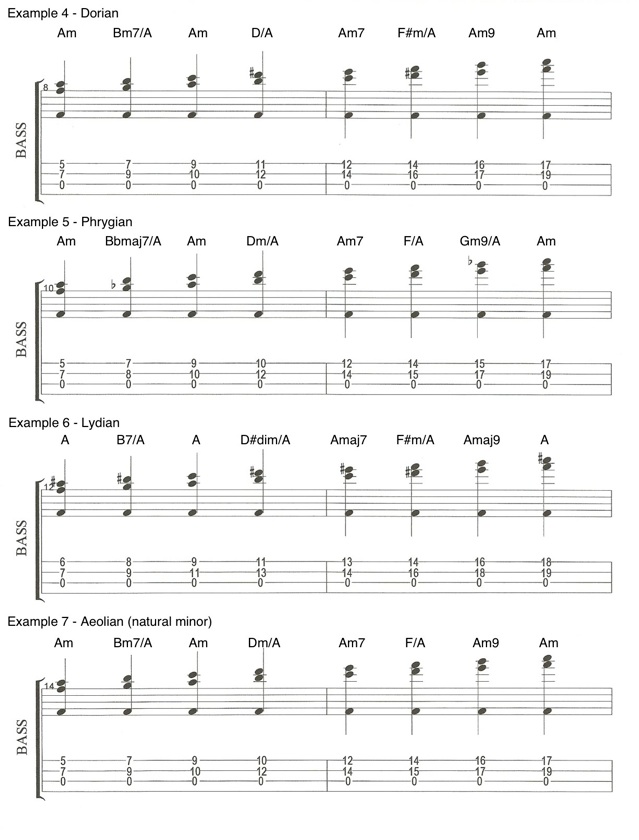Right Hand Techniques on Electric Bass
As I was posting some of my previous videos I started thinking that I should add a new one describing some of the right hand techniques you’ve seen me using, so here it is.
Conventional Right Hand Technique
When I was learning to play I was taught to place the thumb of my right hand on either a pickup or on the bottom string. Then pluck the strings with my index and middle fingers. It’s a very common right hand technique for the bass and one that I still use a lot. The downside of this technique in my opinion is that it doesn’t make enough use of the thumb. The thumb is probably our most versatile and dextrous digit, so some time ago I decided that my two finger technique wasn’t versatile enough for everything I wanted to play on the bass and I started working on some right-hand techniques that use my thumb more.
String Damping
A simple way to use your thumb with the two finger right hand technique is to use it to dampen and mute the lower strings. Damping is a key issue for bass players especially with the lower strings because they have a tendency to ring and create unwanted noise when we’re not using them.
If you position your thumb so that it touches these strings when you’re not using them it will mute them and stop any unwanted noise coming from them. This is a simple adaptation to the technique that can make an important difference to your playing, especially if you have a low B string on your bass. It will involve some practice because you will need to get used to constantly moving your thumb as you change strings but if you’re conscientious about listening out for unwanted noise from your lower strings when you practice then it should become instinctive fairly quickly.
Use the right hand thumb
Now let’s change the technique altogether and get our thumb playing notes instead of just damping. The first thing we need to look at is how can we combine using our fingers and thumb. Example 1 is a simple demonstration of how we can play notes by alternating between our thumb and first finger. In the example T means play the note with your right hand thumb and i means play the note with your right hand index finger. As you can see from the example we should be able to use this technique to play across strings as in bar one, on adjacent strings as in bar two and on the same string as in bar three.

What are the benefits of playing notes with your right hand thumb
The advantage of this right hand technique over the two finger technique is that it’s much easier to play across strings. There’s much more independence (and physical distance) between your index finger and thumb between your index and middle fingers. I also find it much more natural to keep a constant tempo at high speeds.
Muting Strings
A third benefit of using this right hand technique is damping, particularly palm-muting. When I use this right hand technique I rest the palm of my hand on the lower strings near the bridge to dampen them and stop any unwanted noise. In effect my palm is functioning in the same role my thumb was in the previous right hand technique.
I can take this technique a step further and use my palm to mute the strings I’m playing as well. If you rest your palm on the string close enough to the bridge then you’ll still hear the note. However, it will have a muted and staccato sound. It’s a good approximation to the classic Motown sound that James Jameson used to get by putting bits of foam under his strings in front of the bridge.
Anthony Jackson is another great bass player who uses this muted sound a lot in his playing. Try playing through Example 1 both with and without the palm muting. Then when you get used to it, try applying the same techniques to other areas of your practice.
Right Hand Middle Finger and Ring Finger
The next obvious thing to do with this right hand technique is start using more fingers on your right hand. Example 2 is a demonstration of how to use your thumb, index and middle fingers to play chords. Similar to the way a guitarist finger picks. (T, i & m = Thumb, Index and Middle)
 You can also add your third finger (and even your little finger) to this technique especially if you’re playing chords that use more than just three strings. Again this is similar to how a guitarist would finger pick.
You can also add your third finger (and even your little finger) to this technique especially if you’re playing chords that use more than just three strings. Again this is similar to how a guitarist would finger pick.
Other right hand techniques
Another simple right hand technique you can apply to playing chords is raking. With either your index or middle finger or both.
Example 3 is a demonstration of this right hand technique.
 You might think that the next logical place to take our right hand technique would be to try and use our thumb and three fingers and then our thumb and four fingers. And you might well be right. A lot of bass players have explored right hand techniques using all the fingers on their right hand. And I would encourage you to explore it, as I have, to find out what works best for you.
You might think that the next logical place to take our right hand technique would be to try and use our thumb and three fingers and then our thumb and four fingers. And you might well be right. A lot of bass players have explored right hand techniques using all the fingers on their right hand. And I would encourage you to explore it, as I have, to find out what works best for you.
The thumb, index and ring right hand technique
My personal favourite right hand technique is a little simpler. I prefer to use my thumb with my index and third finger. It sounds a little odd because I’m not using my middle finger. However, after years of experimenting with three and four finger right hand techniques. I’ve found this one to be the most efficient for me.
I think it’s because my index and third fingers are almost the same length whereas my middle finger is longer. When I try and use those three fingers all together, it works, but it’s less comfortable than when I leave the middle finger out. This right hand technique has proved very versatile. It’s fast, it’s easy to cross strings. It’s easy to keep a constant rhythm even at high speeds without getting tired. And it works well for both triplet and sixteenth note rhythms.
Example 4 is a demonstration of how we can use this right hand technique to play across strings in bar 1, on adjacent strings in bar 2 and on a single string in bar 3. (In this example T=thumb, 1=index & 3=third finger)
 Once you’ve found a technique, or several techniques that work well for you then try applying them in all areas of your practice. For instance, Example 5 is a demonstration of how I might apply my technique demonstrated in Example 4 to practicing a C major scale.
Once you’ve found a technique, or several techniques that work well for you then try applying them in all areas of your practice. For instance, Example 5 is a demonstration of how I might apply my technique demonstrated in Example 4 to practicing a C major scale.
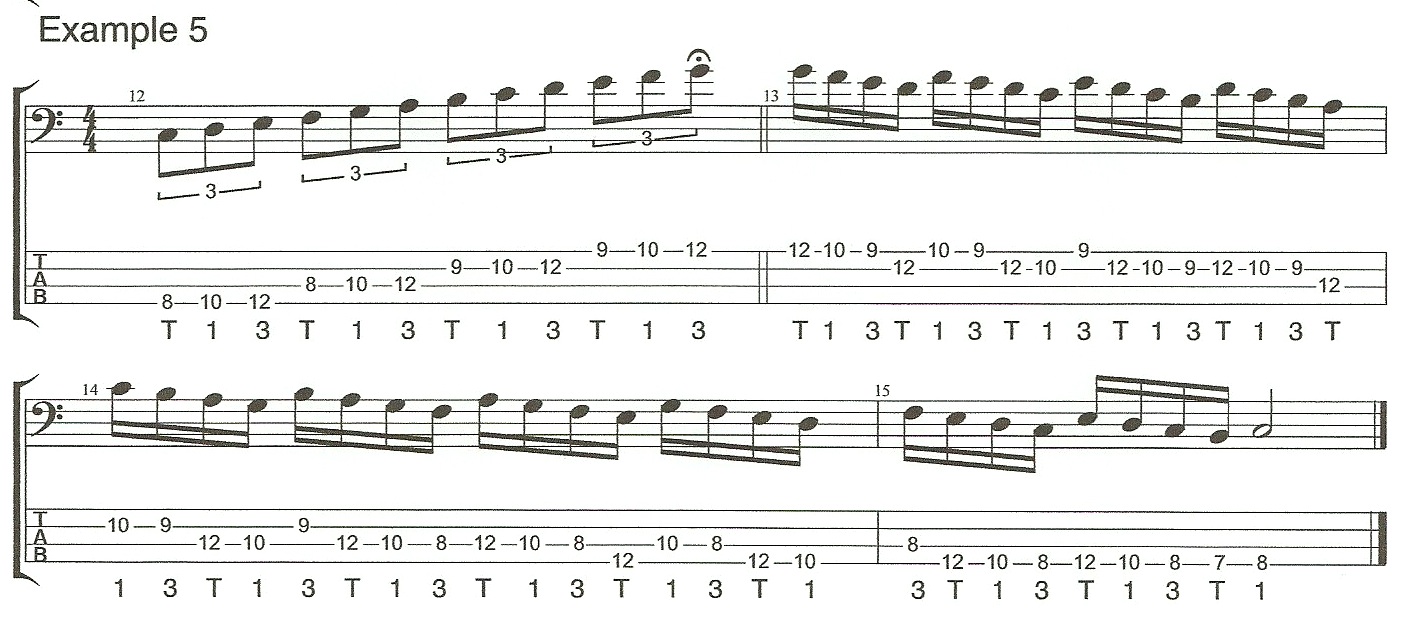
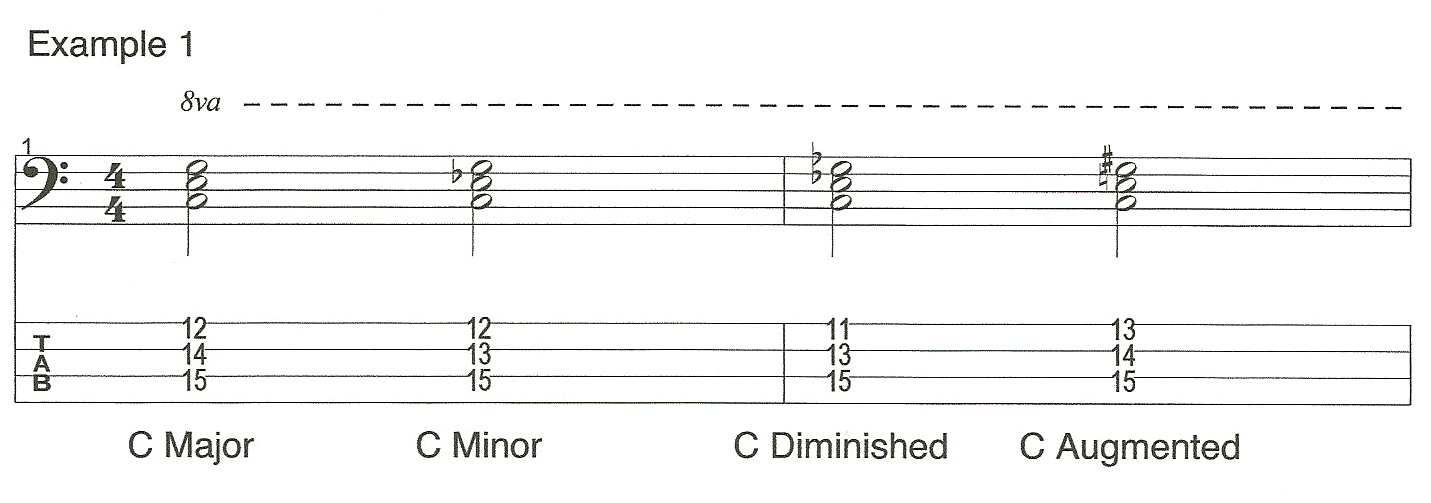 Of these four, major and minor are by far the most common and will be the ones we use the most.
Of these four, major and minor are by far the most common and will be the ones we use the most.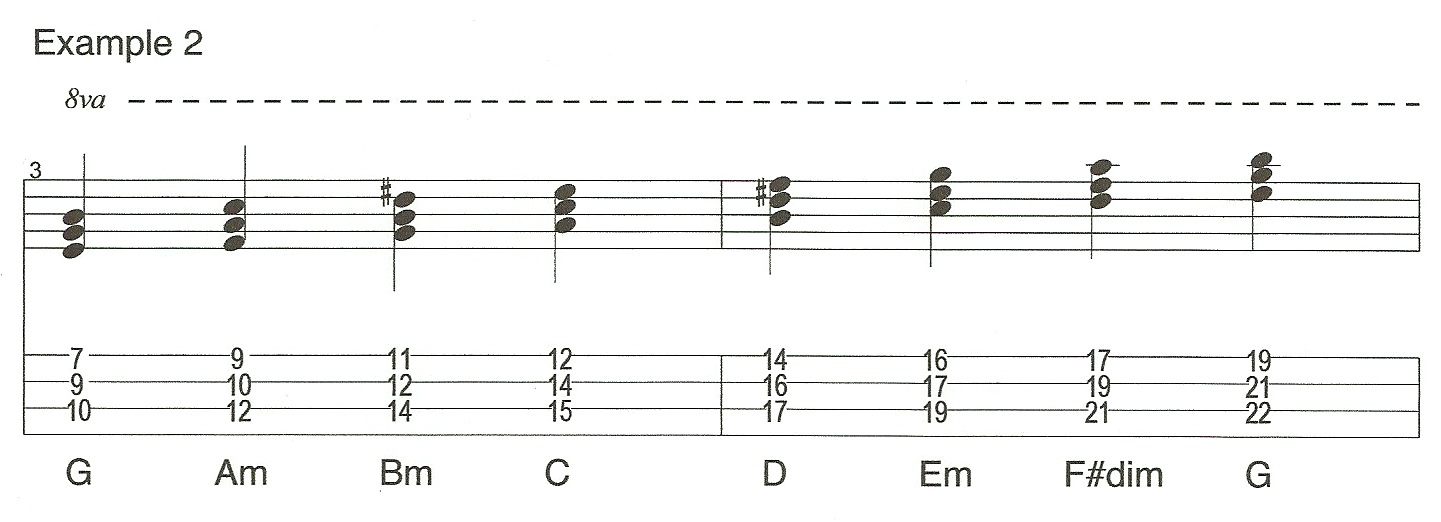 In the previous example we refer to these chords as root position because we’ve arranged each triad in a neatly stacked order with the root at the bottom and the third and the fifth stacked on top of it. If we change the order of these notes to make either the third or the fifth the lowest note then we have what we call an “Inversion”. There are only two possible ways to invert a triad. First of all put the third at the bottom as in Example 3.
In the previous example we refer to these chords as root position because we’ve arranged each triad in a neatly stacked order with the root at the bottom and the third and the fifth stacked on top of it. If we change the order of these notes to make either the third or the fifth the lowest note then we have what we call an “Inversion”. There are only two possible ways to invert a triad. First of all put the third at the bottom as in Example 3.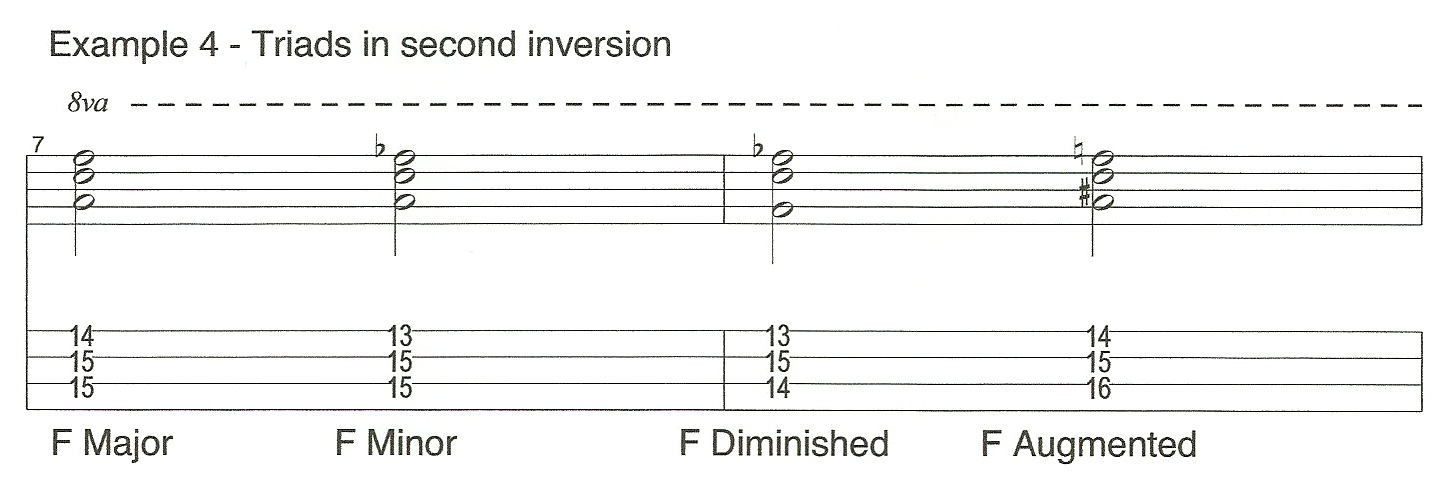 Example 5 is an E major scale harmonised in first inversion triads.
Example 5 is an E major scale harmonised in first inversion triads.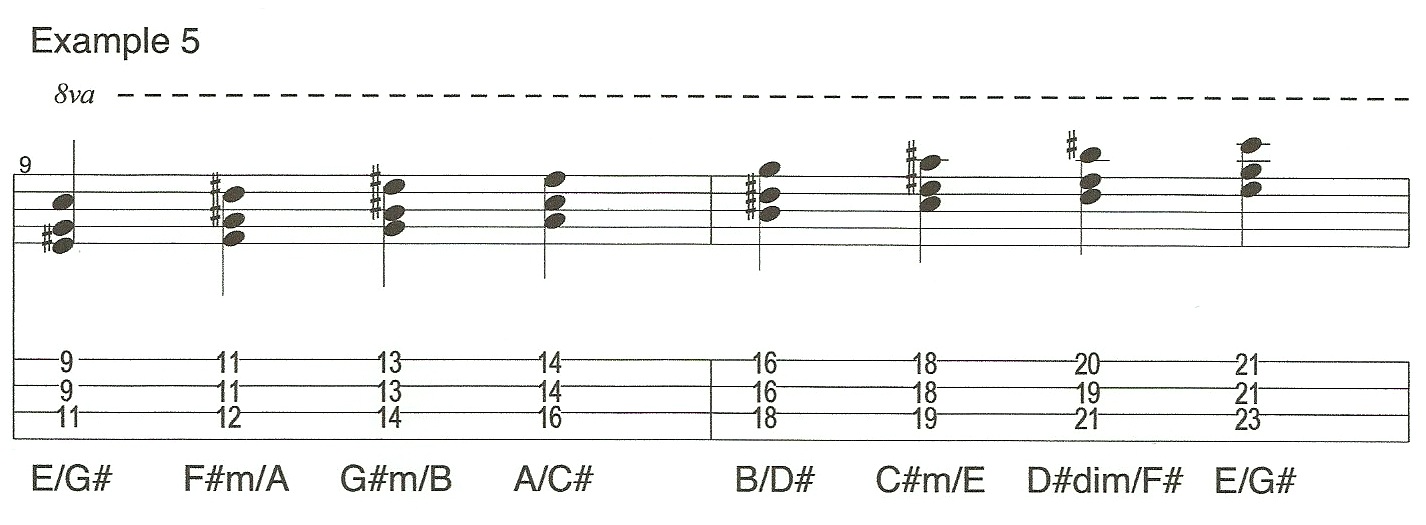 Finally example 6 is a D major scale harmonised using the second inversion.
Finally example 6 is a D major scale harmonised using the second inversion.
